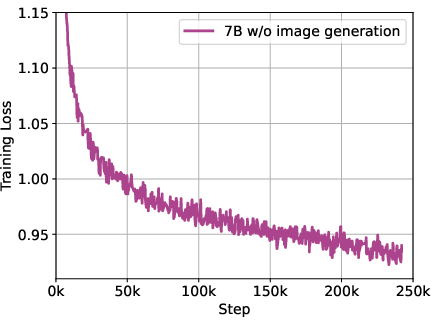- The paper introduces a uniform transformer that tokenizes text, images, and code into a single mixed-modal framework for seamless integration.
- It demonstrates state-of-the-art performance in image captioning and competitive results in long-form mixed-modal generation compared to specialized models.
- The study presents architectural innovations like query-key normalization, offering a robust foundation for unified multimodal reasoning and generation.
"Chameleon: Mixed-Modal Early-Fusion Foundation Models" (2405.09818)
Introduction
The paper introduces "Chameleon: Mixed-Modal Early-Fusion Foundation Models," a novel family of foundational models designed for multimodal tasks, integrating text, images, and code into a seamless token-based framework. Chameleon diverges from traditional multimodal models, which often use modality-specific encoders, by employing a uniform architecture that treats all input modalities as discrete tokens. This allows Chameleon to perform complex tasks like visual question answering, image captioning, and both text and image generation within a single model, without needing separate components tailored to each modality.

Figure 1: Chameleon represents all modalities --- images, text, and code, as discrete tokens and uses a uniform transformer-based architecture that is trained from scratch in an end-to-end fashion on ∼10T tokens of interleaved mixed-modal data. As a result, Chameleon can both reason over, as well as generate, arbitrary mixed-modal documents. Text tokens are represented in green and image tokens are represented in blue.
Architecture and Training
Chameleon's architecture is a fully tokenized transformer model that ensures all input modalities are integrated early in the processing pipeline. By converting images into discrete tokens similar to text, the model applies the same transformer layers across all data types. This uniform token representation simplifies the model’s design and enhances its capability to handle arbitrary sequences of mixed-modal data. Training stability in Chameleon is achieved through architectural innovations like query-key normalization and revised layer normalization placement, crucial for handling the different entropy levels across modalities.
Evaluations demonstrate that Chameleon excels across various benchmarks, achieving state-of-the-art results in image captioning and competitive performance on text-only tasks against specialized models like LLaMa-2. Notably, Chameleon's 34B variant surpasses existing models in long-form mixed-modal generation, a testament to its mixed-modal reasoning and generation prowess.



Figure 2: LLaMa-2-7B vs Chameleon-7B Architecture Training Curves over Mixed-Modal Data.
Implications and Future Work
The Chameleon model exemplifies a significant advancement toward integrated multimodal AI frameworks. Its ability to uniformly process and generate content across diverse inputs broadens its applicability in areas such as automated content creation, dynamic storytelling, and comprehensive document understanding. Future work could explore further scaling Chameleon’s architecture and improving inference strategies to enhance efficiency, especially in real-time applications.
Conclusion
Chameleon's development marks a pivotal step in multimodal AI research, offering a versatile, efficient framework that seamlessly bridges the gap between separate modality-specific models. Its innovations in training strategies and architectural design provide a robust foundation for future exploration in unified multimodal learning, potentially influencing various AI applications in interdisciplinary domains.





